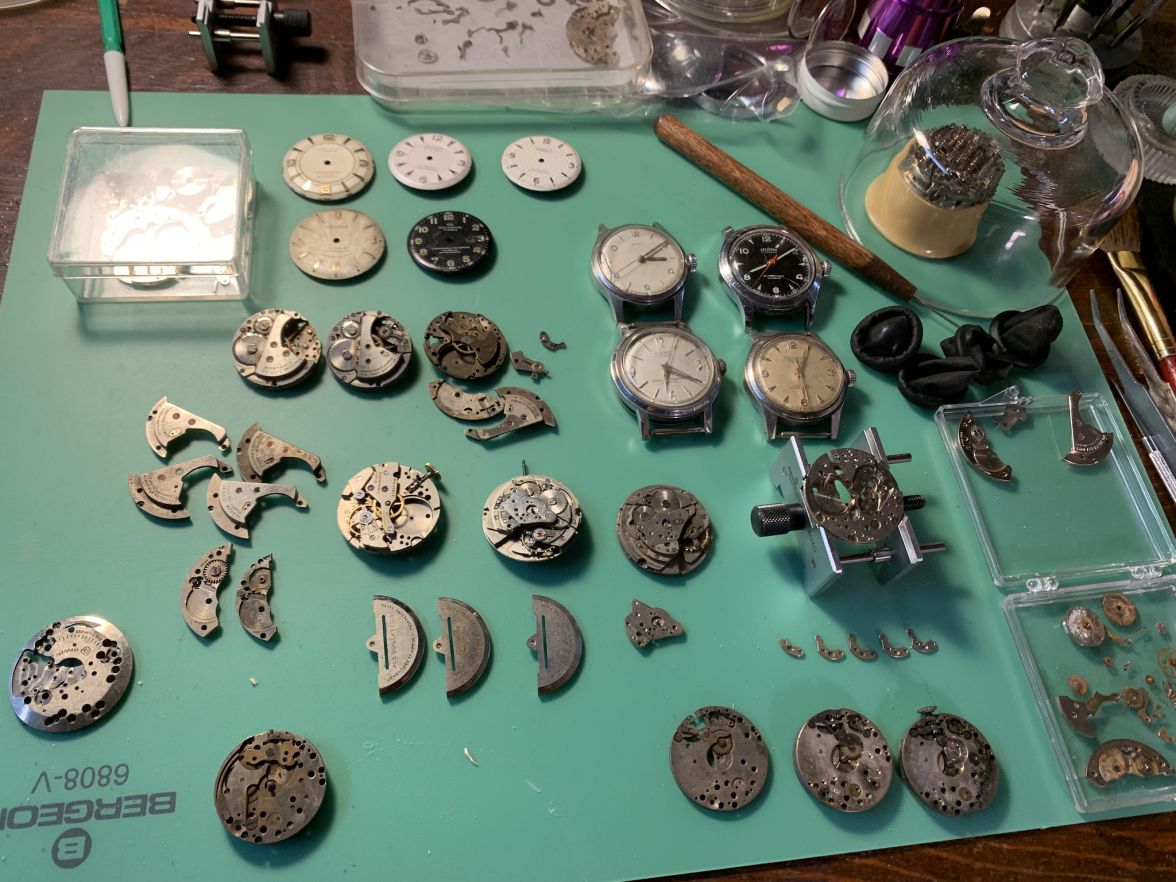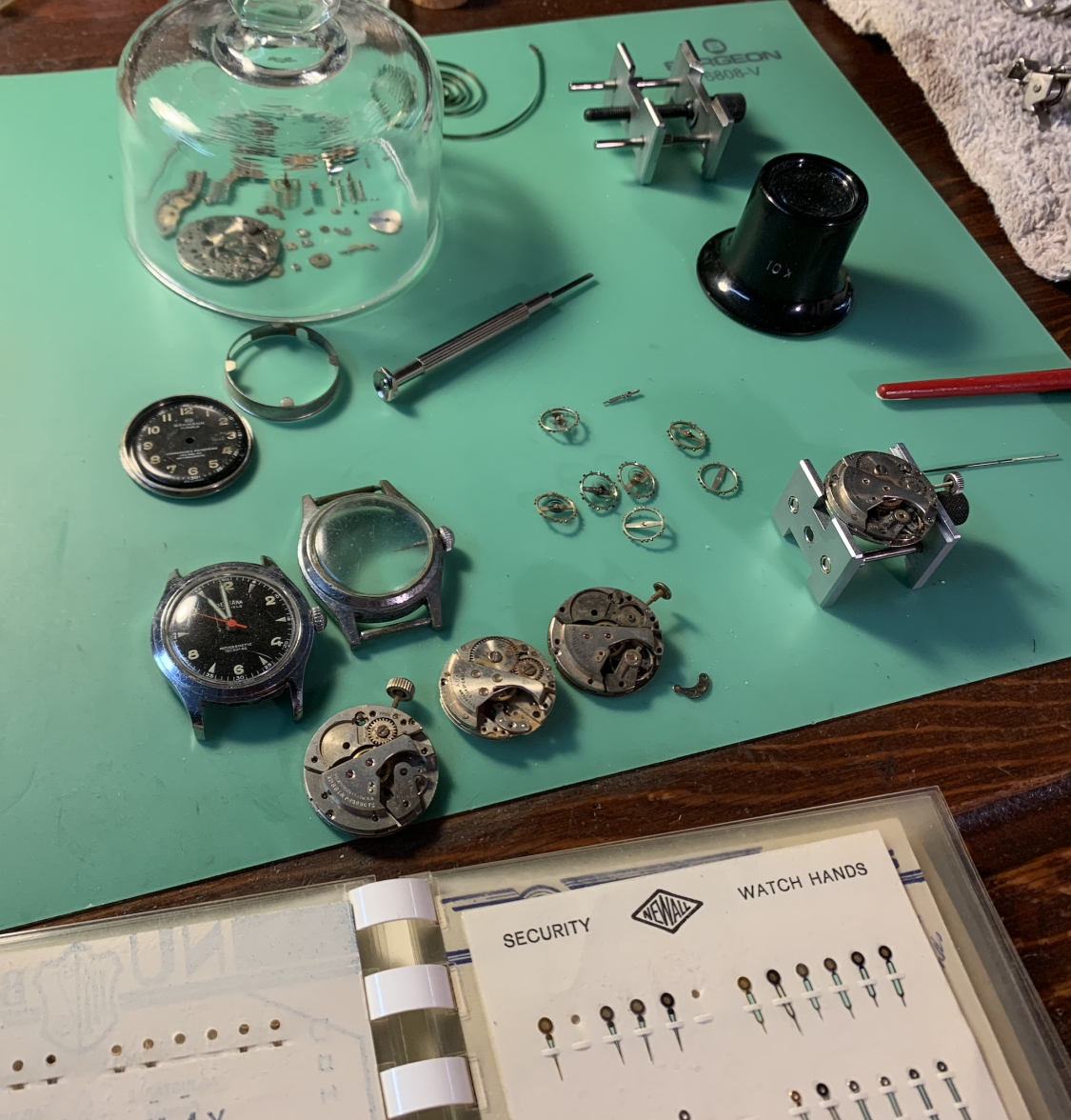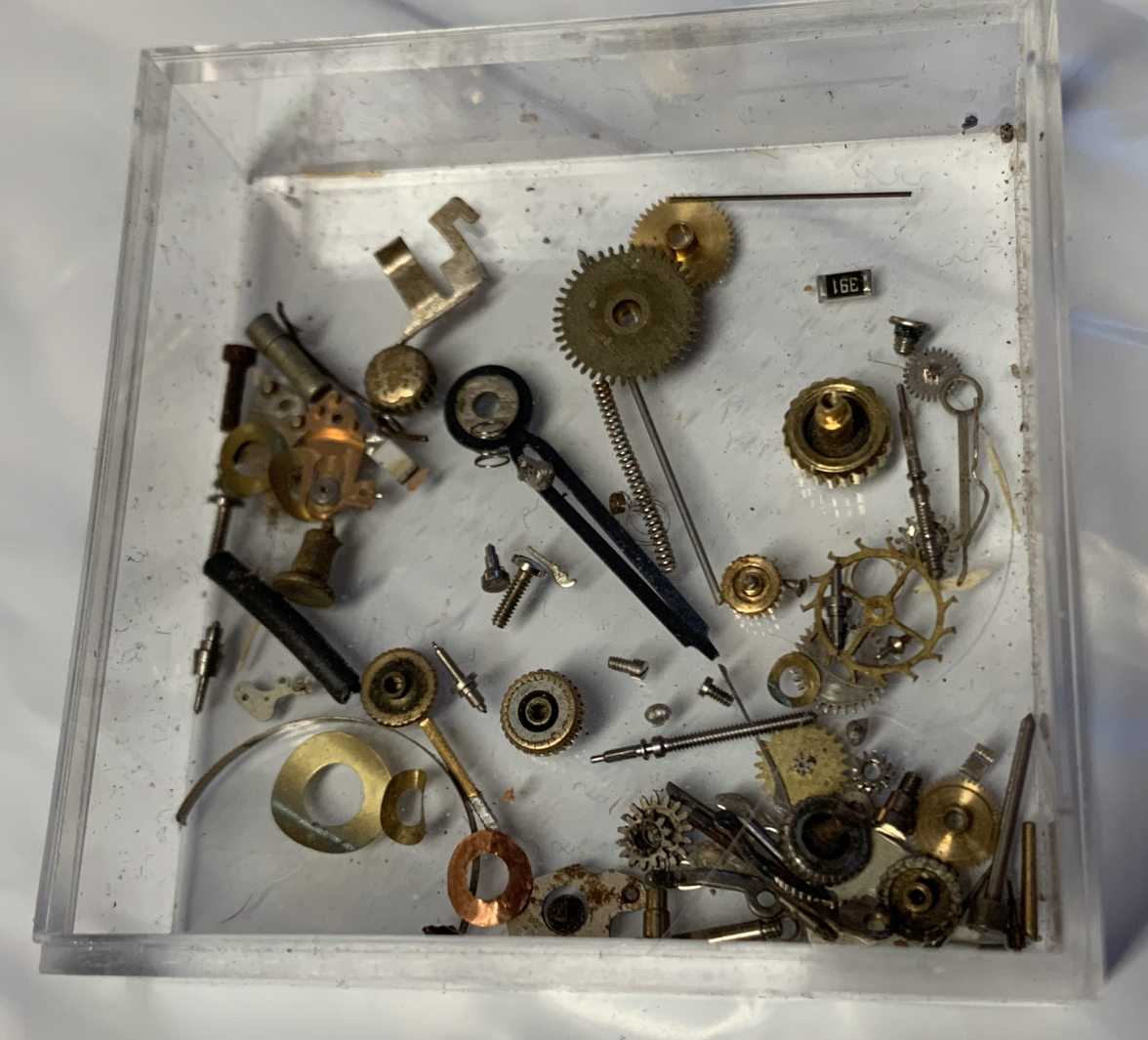sheepdoll
·So I tried the Alum on a scrap movement I had. It worked!
With the pallet bridge removed I could read the caliber number which was AS 1187. I had stripped the rusted parts off the movement before using it as a test case. (Did not realize the dial feet screws were still in it.)
Encouraged by the success. I took some pegwood and cleaned up the movement whicl letting the Val-72 plate soak.
I thought I would see if I had a bridge in my box of spares since I had a pattern to match. I then noticed other movements had the same pattern. These had a distictive bridge. I was able to match a few more parts. I think the delbana I got recently may be a similar movement.
I then started cross referencing the movements on ranfft. Some of the parts look similar across the calibers. I have not done any best fit cross references yet. Looks like I have half a dozen or so of the 1187.
There were also some automatics and a few other AS calibers.
Seems most of these were raided for their balances. I have been wanting a movement for the Wakman dial. So I may have something else to play with. Would be something If I can get another watch out of boxes of random parts.
Really need an AI program to sort through the balances I have. Might have staffs somewhere. Hairsprings are probably the showstopper. I think the textbook relates more to the big pocket watch hairsprings. I still keep thinking there must be a way to come up with some sort of programmable micro electronic tool that can be used to manipulate the hairsprings. Some sort of micro-robot that grab parts on the spring without kacking the spring.
Note the Val 72 and 23 stuff is along the edges of the mat. I would rather be working on the fancy watches, but the old workhorses are probably safer to play with. Less heartache when parts go flying.





